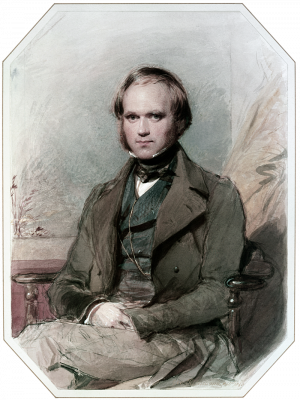Charles Darwin was an English naturalist born in the 1800s who first advocated for the theory of evolution by natural selection. His findings from his trip aboard the HMS Beagle to the Galápagos Islands and other parts of South America showed that life branched out from one common ancestor and diverged into different species. Darwin’s theory served as the beginning of modern evolutionary science. Despite his numerous achievements later in life, early on, Darwin was not the model student one would expect to become the father of evolution.
Early Education
As was the custom in the town of Shrewsbury, Charles enrolled in Shrewsbury School for his elementary years. He boarded at the campus but came to live at home again after a brief stay there as his house was just a mile away. The local learning institution taught children the classics, including the Latin and the Ancient Greek languages. These linguistic subjects were far from Darwin’s favorites; he much preferred studying the sciences. He went so far as to convince one of his brothers to build a chemistry laboratory in their garden tool-house even if Chemistry was not part of their curriculum.
While Darwin did not present numerous failures nor completely neglect his studies during this time, he would rather spend time collecting animals, catching rats, and hunting in the woods.
University of Edinburgh
Charles’ father, Robert Darwin, aimed for Charles to become a physician or a clergyman. Following his father’s direction, Darwin helped his father as an apprentice in the summer of 1825. After which, he attended the University of Edinburgh at the age of 16; it was considered a reputable, excellent medical school. Edinburgh was the location where several trailblazers like Darwin had once lived, such as Adam Smith, David Hume, and Joseph Black. The school was the same one his father had gone to 42 years before Darwin. Despite Robert’s praise for his alma mater, Charles Darwin was neglectful of his studies at the university. He was often bored at lectures and anxious during surgical demonstrations. Darwin found the anatomist Alexander Monro (Tertius) to be, one of his professors, to be “dirty” and “dull,” as described in a letter he sent to his sister, Caroline. He also thought his clinical teacher Andrew Duncan was “stupid.”
What caught his attention was the lesson on taxidermy from the freedman, John Edmonstone. Taxidermy is the process of preserving animal specimens by stuffing them— a skill that would later be used by Darwin in his naturalist ventures, especially on the HMS Beagle voyage. Then, during his second year at the university, Darwin joined the Plinian Society of natural-history. The group debated naturalist concepts and encouraged Darwin to befriend his like-minded gentlemen. This time Darwin wrote in his correspondence that the subjects of Geology and Zoology were boring too. The only teacher he respected was his Chemistry Professor, Thomas Charles Hope.
That same academic year, Darwin joined the zoologist Robert Edmond Grant in his journey to the Firth of Forth to study marine invertebrates; this was one of his first trips that further sparked Darwin’s interest in the natural world. Another pastime for him was the study of classifying plants which he volunteered to do at the university’s museum.
Christ’s College
Robert grew increasingly impatient with Darwin’s passive attitude towards his education, leading him to enroll Darwin in Christ’s College in Cambridge in November of 1828. He had to review the Greek language before going to the city because he had forgotten most of what he had learned in his elementary years. His dorm was where William Paley, once inhabited. Darwin studied one of his papers entitled Natural Theology or Evidences of the Existence and Attributes of the Deity, at the college.
There Darwin applied for a Bachelor of Art’s program because his father wanted him to become a clergyman. However, he failed the qualifying exam for a bachelor’s degree. The exam was called the Tripos test. Thus, Darwin studied to qualify for the ordinary degree at the school and eventually placed tenth out of 178 candidates. He continued to study in Cambridge until 1831.
The three years he stayed at Cambridge were marked with an investigation into the sciences but also much dining, drinking, and hunting. While he considered his time there “wasted” as his autobiography states, this was the place where Darwin started collecting beetles and befriended his professor, John Stevens Henslow. Henslow was the one who invited him to join the HMS Beagle expedition after Darwin graduated from the university. Darwin even eventually returned to college after his 5-year journey on the HMS Beagle. The trip allowed him to gather animal specimens, fossils, and other artifacts for what would become his theory of evolution by natural selection. He used the facilities in his old school to organize his specimens and converse with old friends.
